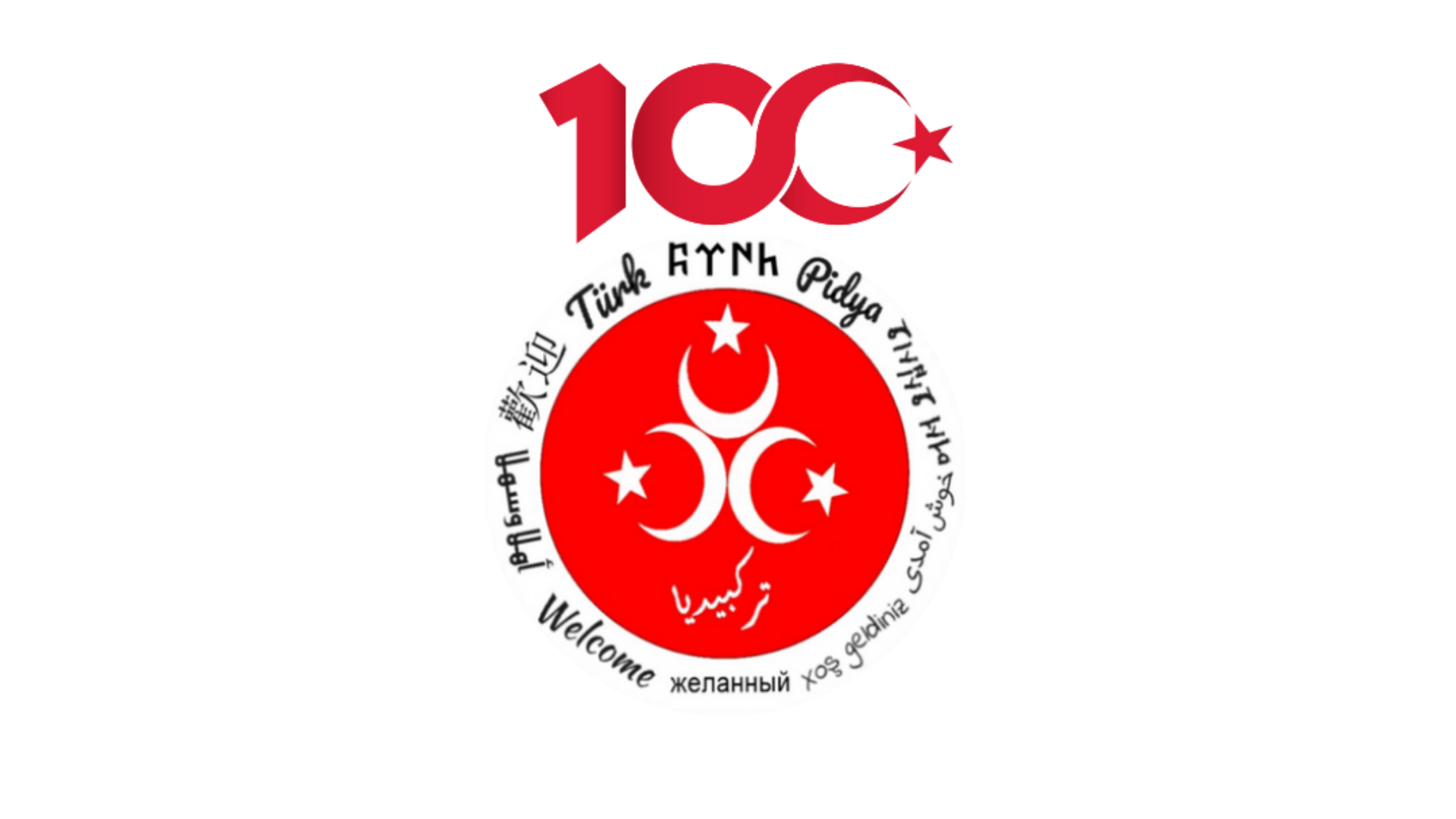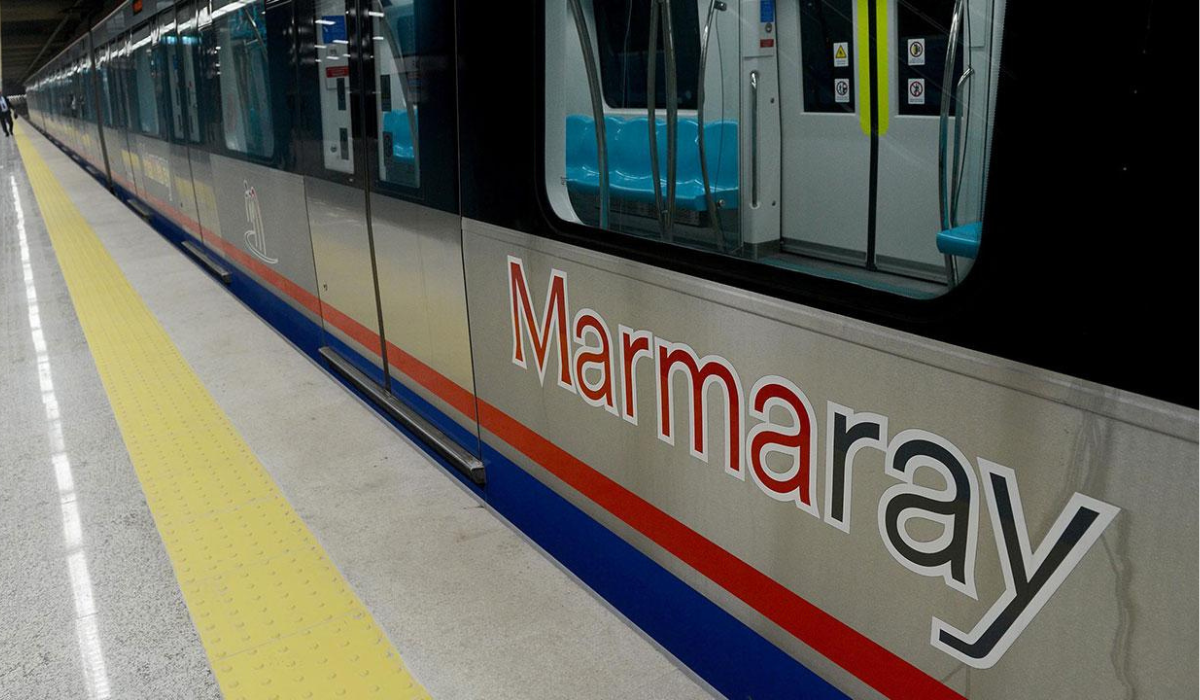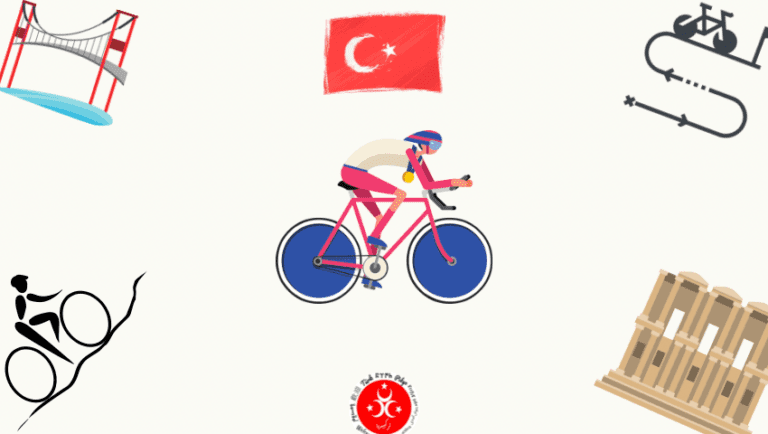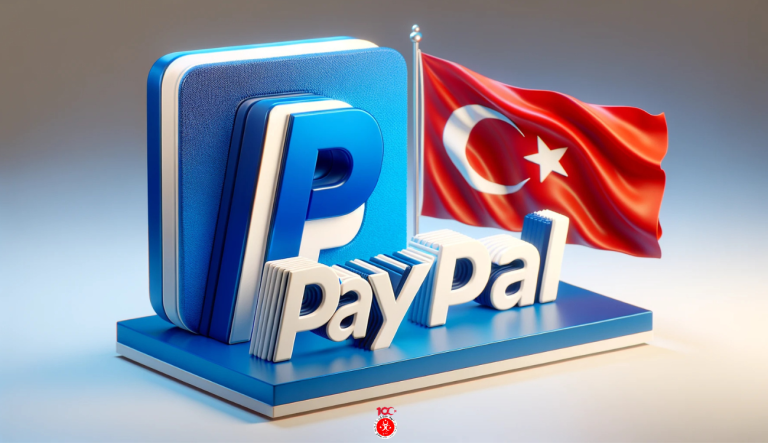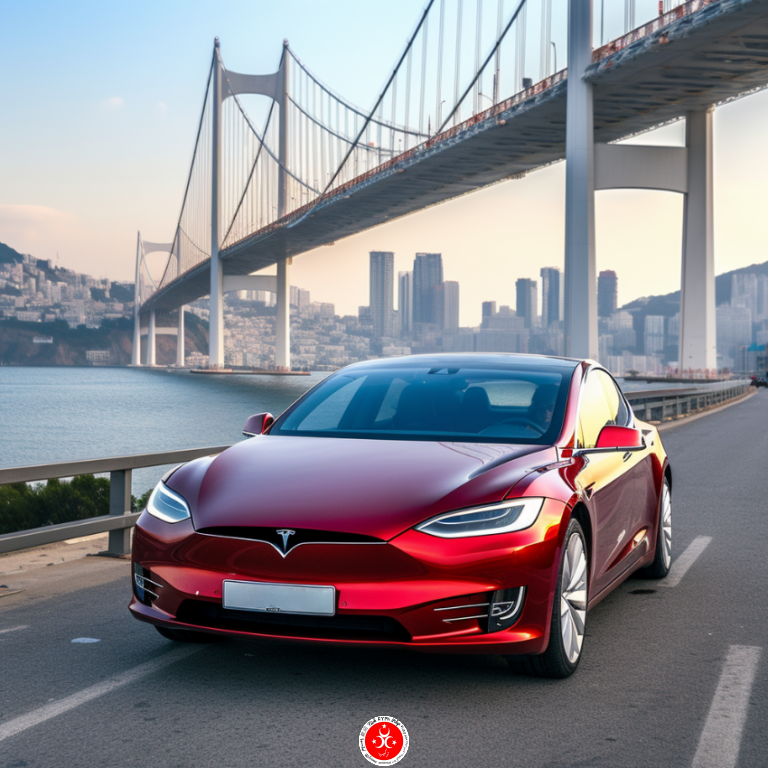Table of Contents
Marmaray Metro Istanbul is one of the most important transportation projects in the world. The line connects the Asian and European sides of Istanbul via an undersea tunnel beneath the Bosphorus and operates entirely with electric trains, helping to reduce urban air pollution.
Running between Gebze and Halkalı, the Marmaray line is approximately 76.6 km long and, as of 2025, includes 43 stations. In 2024, Marmaray carried around 220 million passengers, and on 24 February 2024 it set a daily record with 737,981 passengers.
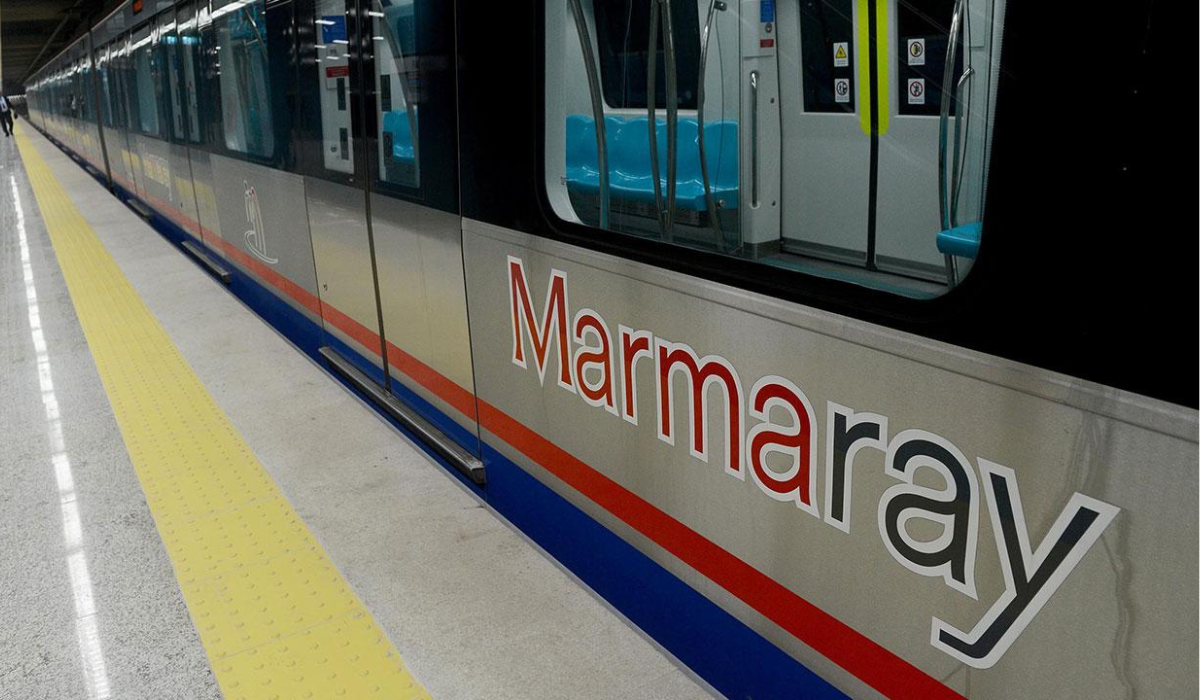
About Istanbul Marmaray Metro
Today Marmaray is one of the largest urban rail infrastructure projects in the world. The modernised suburban railway system stretches approximately 76.6 km from Gebze (on the Asian side, in Kocaeli province) to Halkalı (on the European side of Istanbul), passing under the Bosphorus through an immersed tube tunnel.
The idea of constructing a railway tunnel to connect the European and Asian sides of Istanbul dates back to the Ottoman Empire. Practical implementation of the current Marmaray project began in 2004, and commercial operations started on 29 October 2013.
History of the Istanbul Marmaray Metro

The idea of creating a railway line under the Bosphorus that would connect the Asian and European sides first appeared in 1860 during the reign of Sultan Abdülmecid.
The first serious technical step was taken during the era of Sultan Abdülhamid II. In 1892, French engineers prepared one of the earliest detailed blueprints for a Bosphorus railway tunnel.
Over the next 20 to 30 years, designs were further developed. The general concept was a railway tunnel passing under the Bosphorus, supported on columns built on the sea floor. Although the technology of that time was not sufficient to realise the project, the basic idea survived.
The desire to build a public transport line between the east and west of Istanbul under the Bosphorus grew again in the early 1980s. A comprehensive feasibility study was carried out in 1987 during the premiership of Turgut Özal. The study concluded that such a connection was both technically feasible and cost-effective, and the route used in the present project was selected as the best among several alternatives.
Deep-sea drilling works started in late 2002, and in 2003 contractors began major construction. The project was financed by the Japan Bank for International Cooperation (JBIC/JICA), the Council of Europe Development Bank, and the European Investment Bank.
Marmaray Metro Stations
As of 2025, the Marmaray line has a total of 43 stations. The route starts from Gebze and continues to Halkalı, connecting many important residential and commercial areas on both sides of Istanbul.
| No. | Station name |
| 1 | Gebze |
| 2 | Darıca |
| 3 | Osmangazi |
| 4 | Fatih |
| 5 | Çayırova |
| 6 | Tuzla |
| 7 | İçmeler |
| 8 | Aydıntepe |
| 9 | Güzelyalı |
| 10 | Tersane |
| 11 | Kaynarca |
| 12 | Pendik |
| 13 | Yunus |
| 14 | Kartal |
| 15 | Başak |
| 16 | Atalar |
| 17 | Cevizli |
| 18 | Maltepe |
| 19 | Süreyya Plajı |
| 20 | İdealtepe |
| 21 | Küçükyalı |
| 22 | Bostancı |
| 23 | Suadiye |
| 24 | Erenköy |
| 25 | Göztepe |
| 26 | Feneryolu |
| 27 | Söğütlüçeşme |
| 28 | Ayrılıkçeşmesi |
| 29 | Üsküdar |
| 30 | Sirkeci |
| 31 | Yenikapı |
| 32 | Kazlıçeşme |
| 33 | Zeytinburnu |
| 34 | Yenimahalle |
| 35 | Bakırköy |
| 36 | Ataköy |
| 37 | Yeşilyurt |
| 38 | Yeşilköy |
| 39 | Florya Akvaryum |
| 40 | Florya |
| 41 | Küçükçekmece |
| 42 | Mustafa Kemal |
| 43 | Halkalı |
Marmaray Working Hours and Frequency (2025)
According to the latest information verified in November 2025, Marmaray trains operate with generally similar hours on weekdays and weekends:
- First trains: from Gebze to Halkalı around 06:05; from Halkalı to Gebze around 05:58.
- Last regular trains: from Gebze around 22:50; from Halkalı around 22:58.
- Typical operating window: roughly between 06:00 and 23:30 every day.
- Service frequency: on the Gebze–Halkalı line about every 15 minutes; on the busiest Ataköy–Pendik section, additional trains mean intervals can fall to about 8 minutes during peak hours.
- On some weekends and special days, extra late-night services may run, and some sources report operations extending to around 01:30. For exact first/last train times for your station and date, always check the official Marmaray website or station notices.
If you are combining Marmaray with buses, metro, metrobus or ferries, you may also want to read our detailed guide on Transportation in Istanbul.
Ticket Price of the Istanbul Marmaray Metro (2025)
The fare system on Marmaray is distance-based. When you enter the system, your Istanbulkart is charged the maximum fare for the longest possible journey. When you exit, you tap your card again at the refund machines in the station, and the difference between the maximum fare and the fare corresponding to the distance you actually travelled is refunded to your card.
The fares below reflect the latest official tariff for January 2025 (amounts in Turkish lira, ₺). Fares may change during the year, so always confirm on the official Marmaray channels before you travel.
| Station range (number of stops) | Full fare (₺) | Student fare (₺) | Notes |
|---|---|---|---|
| 1 – 7 stations | 27.00 ₺ | 13.18 ₺ | Minimum fare. |
| 8 – 14 stations | 34.72 ₺ | See official tariff | Intermediate distance; discounted categories follow official scale. |
| 15 – 21 stations | See official tariff | See official tariff | Fares are between the 8–14 and 36–43 station levels. |
| 22 – 28 stations | See official tariff | See official tariff | Check current table published by Marmaray. |
| 29 – 35 stations | See official tariff | See official tariff | Check current table published by Marmaray. |
| 36 – 43 stations | 59.76 ₺ | 27.00 ₺ | Maximum fare for a full-distance trip. |
Important Information about Marmaray Metro Line
- On entry, your Istanbulkart is charged the fare for the longest distance from that station.
- When you exit and tap your card at the refund machines, the system calculates the distance you actually travelled and automatically refunds the difference to your Istanbulkart.
- If more than one person uses the same Istanbulkart for a trip, only one fare adjustment (refund) is made when exiting. Additional passengers will effectively pay the maximum fare.
- Personal discounted cards (student, social, free, monthly pass, etc.) are strictly personal. If they are used by anyone other than the authorised cardholder, officers may confiscate the card and prevent travel.
- Istanbulkart is valid on Marmaray and is the main payment method. Standard (full), student, social and subscription/abonman cards can all be used.
- Unlike many other public transport lines in Istanbul, Marmaray uses a pure distance-based pricing system. Because of this, there is no standard fixed ‘transfer fare’; the cost of your Marmaray journey depends only on how far you travel on Marmaray itself.
- You can also buy a single-use Marmaray ticket. These are valid only on Marmaray trains and cannot be used on other public transportation vehicles.
- There is no re-tap refund if you exit from the same station you entered without travelling.
- It is not permitted to speak or play music loudly, or to engage in sales or marketing activities, inside trains and stations.
If you are planning your travel around weekends or national days, you can check the full list of public holidays in Turkey in 2025, as services and passenger density may change on those dates.
Bicycle Transfer in the Istanbul Marmaray Metro (2025 Rules)
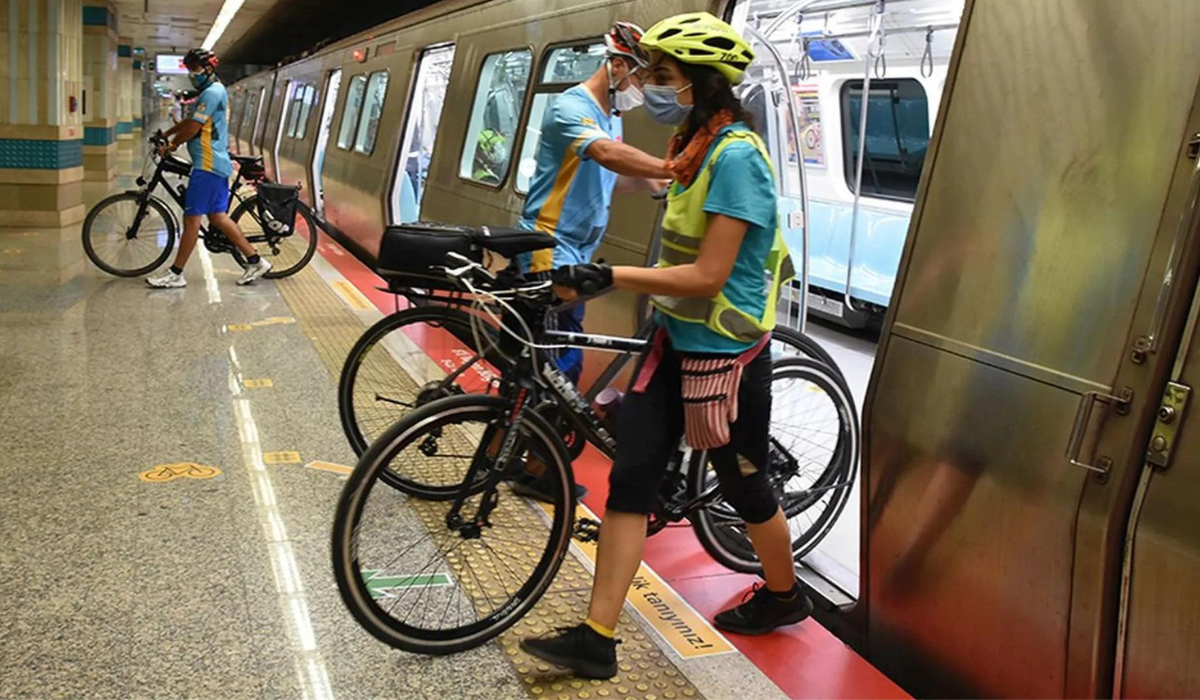
- Foldable bicycles are accepted on trains at all times of day as small hand luggage, provided they are fully folded and do not exceed approximately medium bag size.
- Non-folding bicycles are allowed on trains only during off-peak hours, i.e. outside 07:00–08:30 and 16:00–19:30. These restrictions generally apply on busy working days when passenger density is high.
- On Sundays and national public holidays, non-folding bicycles are accepted throughout the day, without the weekday peak-hour restrictions.
- Do not ride or use bicycles inside station areas or on platforms. Bicycles must be walked and kept under full control at all times.
- The bicycle owner is responsible for any damage, loss or accidents (including those involving third parties) caused by the bicycle at stations or on trains.
- There is no additional fee for transporting bicycles on Marmaray.
Transporting Pets on the Marmaray Metro Line (2025 Rules)
- Small pets such as cats, small dogs (up to 5 kg) and small birds are allowed on Marmaray, provided they are carried in a secure pet carrier that does not exceed 55 x 35 x 30 cm.
- Each passenger may carry only one pet, and the transport of pets is free of charge.
- Pet carriers must be fully closed and kept on the floor or on the passenger’s lap. Pets must not be released from their carriers inside stations or trains.
- Guide dogs accompanying visually impaired passengers are always accepted on trains, provided they are on a leash and have the necessary documentation.
- Passengers must carry the health documents of their animals and present them if requested by officials.
- Wild or dangerous animals that may pose a risk to other passengers are not accepted on trains, even if they are in a cage or carrier.
- The accompanying passenger is responsible for any damage, disturbance or loss (including to third parties) caused by animals carried on Marmaray.
For everyday life in the city with pets, bikes and shopping, you might also find our personal guide on buying groceries in Turkey useful, especially if you are a new expat in Istanbul.
Marmaray Future Projects and New Stations (2025)
As of 2025, no new stations are planned to be added directly to the existing Marmaray line. However, several extension and integration projects are on the agenda to improve connectivity, such as the Halkalı–Kapıkule high-speed railway and the modernisation of the Gebze–Adapazarı suburban line. These projects aim to strengthen Marmaray’s role as a backbone of both Istanbul’s and the wider region’s rail network.
When was the Istanbul Marmaray metro line established?
The idea of constructing the Marmaray railway tunnel dates back to the Ottoman Empire in the 19th century. The modern Marmaray project started construction in 2004 and officially entered service on 29 October 2013.
Can bicycles be transported on the Marmaray metro?
Yes. Foldable bicycles are allowed at all times as hand luggage. Non-folding bicycles are permitted outside peak hours (07:00–08:30 and 16:00–19:30) and are allowed all day on Sundays and national public holidays, provided you follow the detailed rules explained in this article.
Can pets be transported on the Marmaray metro line?
Yes. Small pets up to 5 kg can travel in closed pet carriers not exceeding 55 x 35 x 30 cm, and one pet is allowed per passenger free of charge. Guide dogs are always welcome, and all conditions listed in this article must be respected.
